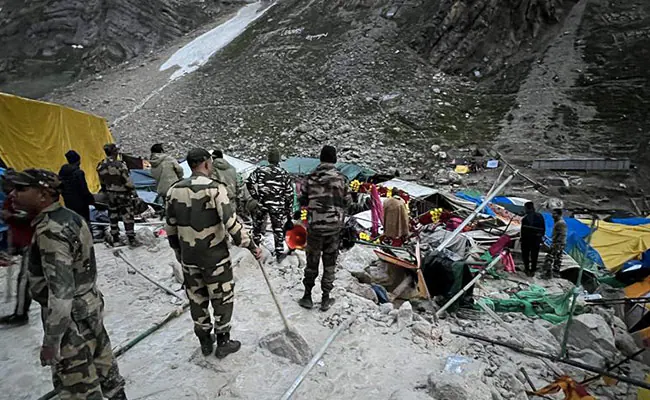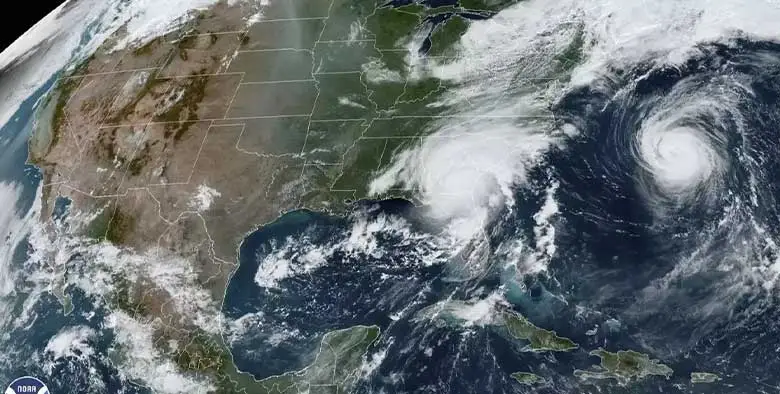- Know Everything About Nipah Virus, Which Is Back In Kerala Again
- Kevin Porter Jr Arrested On His Girlfriend’s Assault Charge
- Market Change Overnight - Know The 8 Things That Did It
- Who Are Alba Baptista And Chris Evans Married On The Weekend?
- Disrupted India vs Pakistan Asia Cup 2023 Match on Reserve Day
- 10 Common Foods That Contain No Calories or Are Very Low in Calories
- Men’s Styling Tips - Know the 9 Common Style Mistakes to Avoid
- Coco Gauff Beats Karoline Muchova and Reaches the US Open Final
- Danny Masterson Gets Life Sentence of 30 Years for Two Rapes
- Experience A Splendid Vacation in Kashmir with These 15 Gorgeous Sights
- India
- Thrusday , April 18, 2024
- Last Published Sep 12, 2023, 6:48:32 PM

Amarnath Flash Floods: What, When And How?
On Friday, July 8, 2022, highly-localized rain in Amarnath, Jammu and Kashmir caused flooding. This led to the deaths of at least 16 people and injuries to more than 20 people who were on their way to the holy cave of Baba Amarnath. The people who died were at a camp near the holy cave. The moment after the news of the Amarnath floods came to light, many politicians condoled the death of the Amarnath Yatra pilgrims. According to locals, the flooding was the outcome of cloudbursts. However, the Indian Meteorological Department (IMD) later clarified that the flood was not caused due to the cloudburst. Well! this was the background of Amarnath cloudburst. But, do you know what are cloudbursts and how they cause flash flooding? Keep reading the post.
What Are Cloudbursts?
A cloudburst is a natural phenomenon that refers to an extreme rain condition within a short period of time. Sometimes, hail and thunder accompany cloudbursts. According to Indian Meteorological Department’s (IMD) definition, a cloudburst is unexpected precipitation of rain exceeding 100 mm per hour over a geographical region or approximately 20 to 30 km. From the definition itself, you can relate better to the impact of precipitation over a small region. Usually, cloudbursts that occur in the Himalayan ranges involves heavy rain for a short period. However, it is pertinent to note here that not all instances of heavy rain causes cloudbursts. Flooding can only be categorized as cloudburst if the area of precipitation is limited to 20 to 30 km.What Was IMD’s Response To The Amarnath Floods?
According to weather experts, the shrine region received 31 mm of rainfall between 4:30 pm and 6:30 pm on Friday. The low amount of rainfall does not fit with the definition. Therefore, as per them, the reason of flash floods was not cloudbursts. According to IMD Director General Mrutyunjay Mohapatra, “The flash floods could have been triggered due to rainfall in the higher reaches of the mountains near the Amarnath cave shrine.”Why Do Cloudbursts Often Occur In Hilly Areas?
According to experts, in hilly areas, sometimes saturated clouds fail to produce rain due to the upward movement of the warm current of air. Due to this upward movement, raindrops start moving upwards instead of falling downwards. The upward movement of raindrops creates a space for the formation of new rain drops. When mixed with the existing droplets, the newly formed raindrops increases the size of the existing ones. When the size and density of raindrops exceeds the rain carrying capacity of clouds, they fall down together, resulting in flash flooding. According to a 2020 study, the meteorological factors behind the 2013 Kedarnath flooding involved a cloudburst. At that time, the cloudburst had happened due to some factors, including:- High relative humidity.
- High cloud coverage.
- Low temperature.
- Slow speed of winds.












